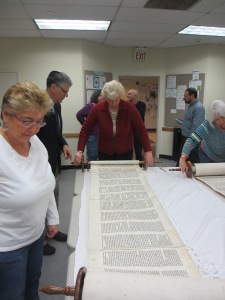By action of the Board of Trustees of Vassar Temple
April 29, 2014
WHEREAS Doi Cohen has been a very active member of Vassar Temple for 40 years, and
WHEREAS Doi has served on the Board of Trustees on and off over approximately 25 years, including terms on the Executive Committee, starting her Board service as the Sisterhood representative, and
WHEREAS Doi taught our children in confirmation classes and chaired the Reyut committee for many years, and
WHEREAS Doi’s exemplary work on Temple publicity kept all members aware of temple activities, and
WHEREAS Doi’s friendship, advice and leadership on many topics has benefited many Vassar Temple members over the years, and
WHEREAS Doi served all of her Temple roles with intelligence, skill and integrity, giving generously of her time and knowledge; therefore
BE IT RESOLVED that the officers and Board of Trustees of Vassar Temple, on behalf of the entire congregation, thank Doi Cohen most sincerely for her devoted service to so many facets of Temple life, and
BE IT FURTHER RESOLVED that a copy of this resolution be attached to the minutes and a copy of it presented to Doi Cohen.
By action of the Board of Trustees of Vassar Temple
April 29, 2014










